Step 3. Assess Application Portfolio and Next Steps
SAP LeanIX supports and recommends some industry-best-practice concepts and provides powerful Reports. The following guide will help you in realizing a profound assessment of your application portfolio.
1. Apply the TIME model
SAP LeanIX supports classifying applications in your Inventory according to Gartner TIME Model, allowing you to categorize them into Tolerate, Invest, Migrate, and Eliminate. By also adding cost data, you can quickly develop multidimensional views that allow you to, for example, identify high-cost applications that do not adequately serve the business needs. In SAP LeanIX, based on your application portfolio's Functional and Technology Fit assessment, you can classify applications into the relevant TIME category. Once the initial set of evaluations is complete, you can use SAP LeanIX reports to visualize your portfolio.

2. Apply Gartner’s Pace-Layered Application Strategy
The Pace layering strategy helps you cluster your business capabilities into three different categories: Commodity (typically 70-75% of business capabilities), Differentiation (usually 20%), and Innovation (normally 5-10%). This strategy will help you in the first steps to understand the as-is of your business capability landscape and provide a framework you can use at a later stage, to shift your IT investments into more differentiating or innovating capabilities, for example.
3. Apply Reports
One of the most critical out-of-the-box reports in SAP LeanIX for your Application Portfolio Assessment is the Application Landscape Report. This report helps you identify applications in your IT landscape depending on the color-coded overview that you choose based on the filtering available. You can drill down, add filters and properties, and switch between different views until you find what you need. For example, applying a view of Applications by Mission Criticality, then going to Settings, clustering by Business Capability, and adding Left and Right properties based on Functional and Technical Fit. With these specific settings, you will see applications that are business-critical but have been deemed by users as technically inappropriate and functionally unreasonable. This can be one of the starting points for your rationalization efforts, for example.
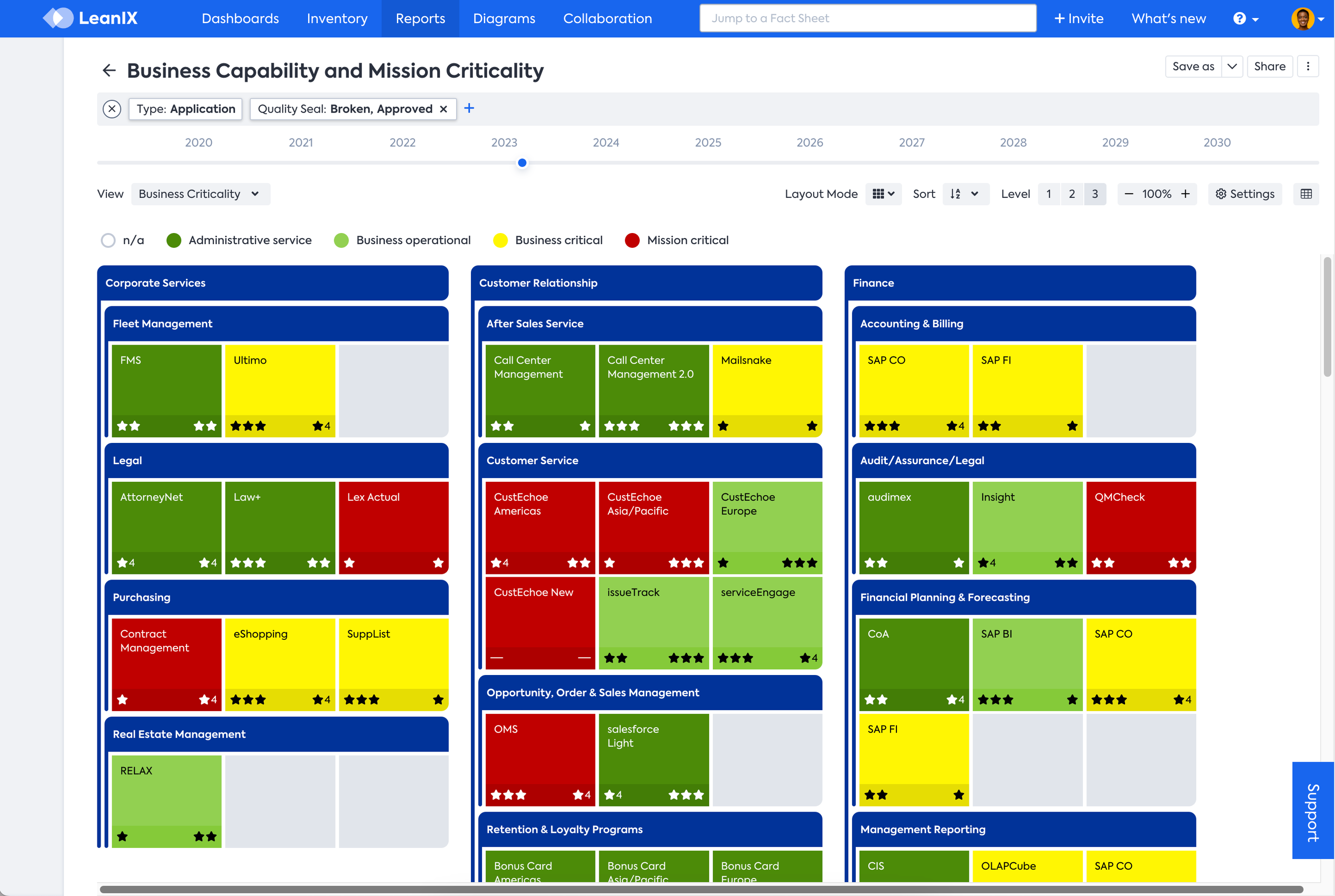
Another very helpful report is the IT Component Matrix Report (link), which gives you a color-coded overview of your IT components, your Technical Stack, and Providers. Add filters and switch between different views to drill down until you find what you need, for example, by filtering the Report's view to Total Cost (if you have added cost data) and selecting a specific project.
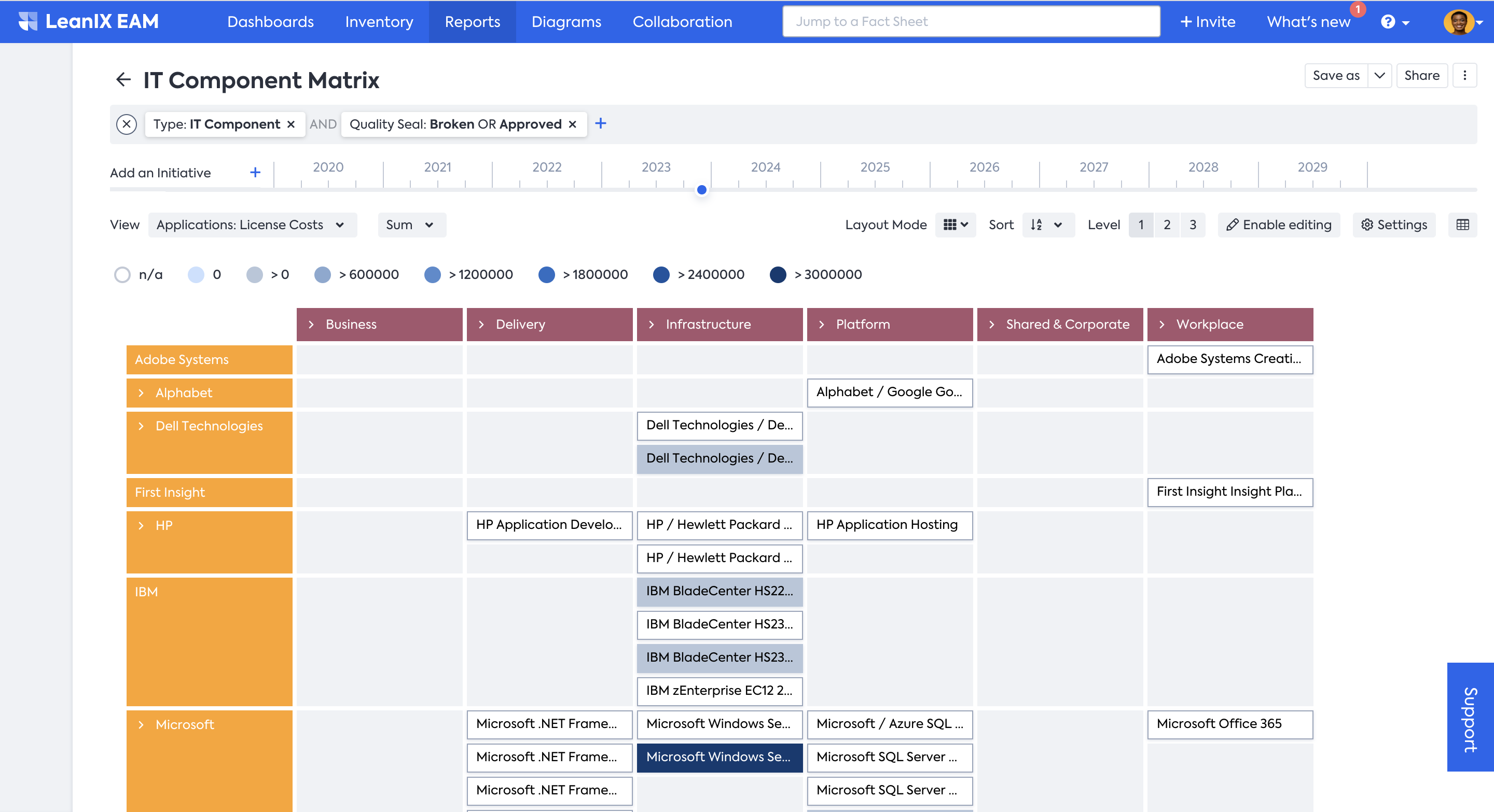
4. Check-list
You will receive a lot of valuable information by using the above reports. Make sure that you have answered all the basic questions in the identification & discovery stage:
- The lifecycle of the applications
- Usage of applications
- Total cost and business value of every application– even the ones barely used. You can compare this cost to the TCO of similar applications used in the industry.
You can monitor and check the progress of data completeness against our best practice metrics, which are available in the Application Portfolio Management Onboarding Dashboard for Enterprise Architects. Good data quality in the workspace eases navigation (especially for non-key users), makes reports more impactful, and improves the usability of SAP LeanIX.
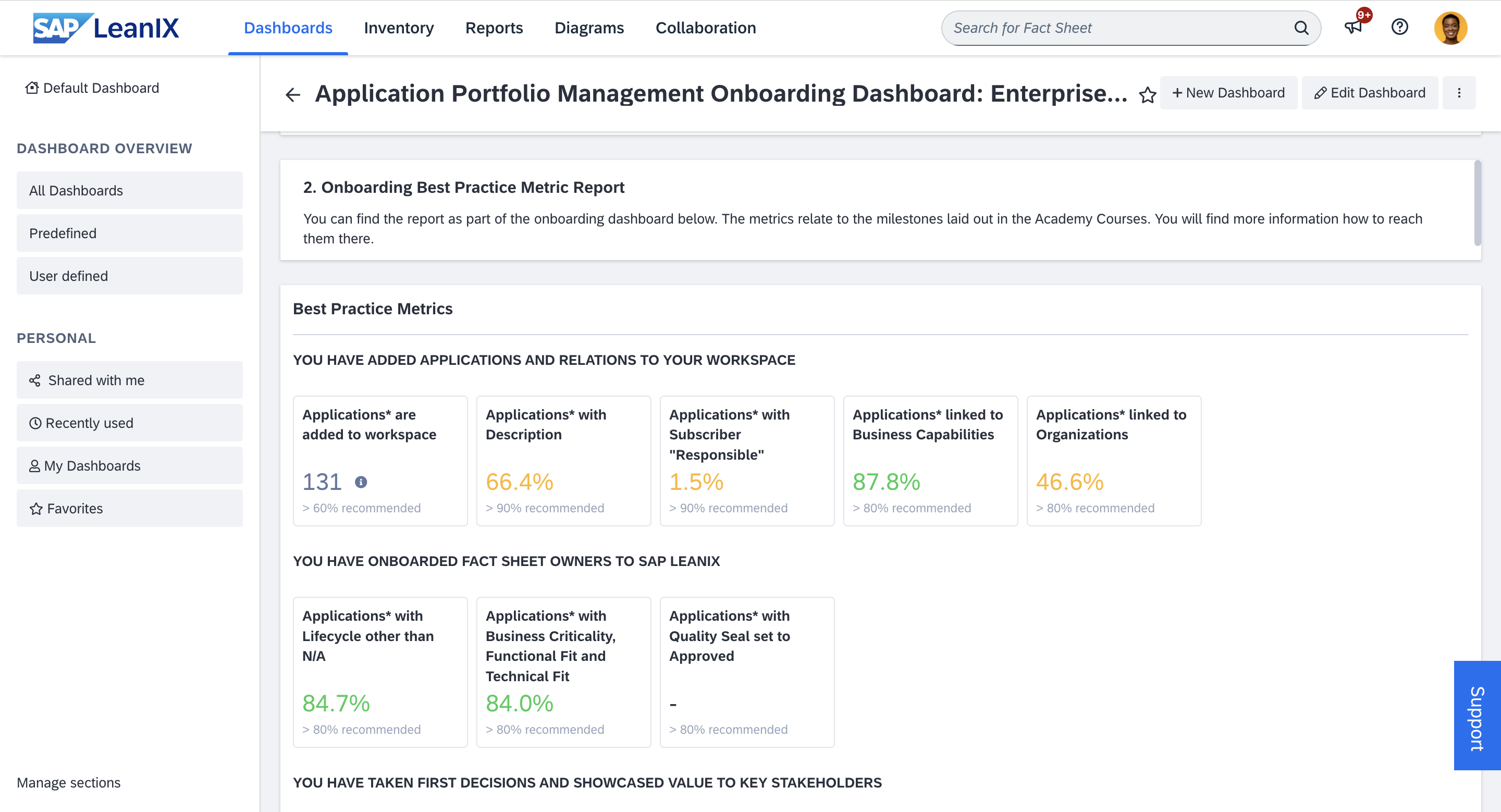
Application Portfolio Management Onboarding Dashboard for Enterprise Architects
You can also use the workspace best practice report for the same, which you can download for free from the SAP LeanIX store. To learn more, see Workspace Best Practice Report.
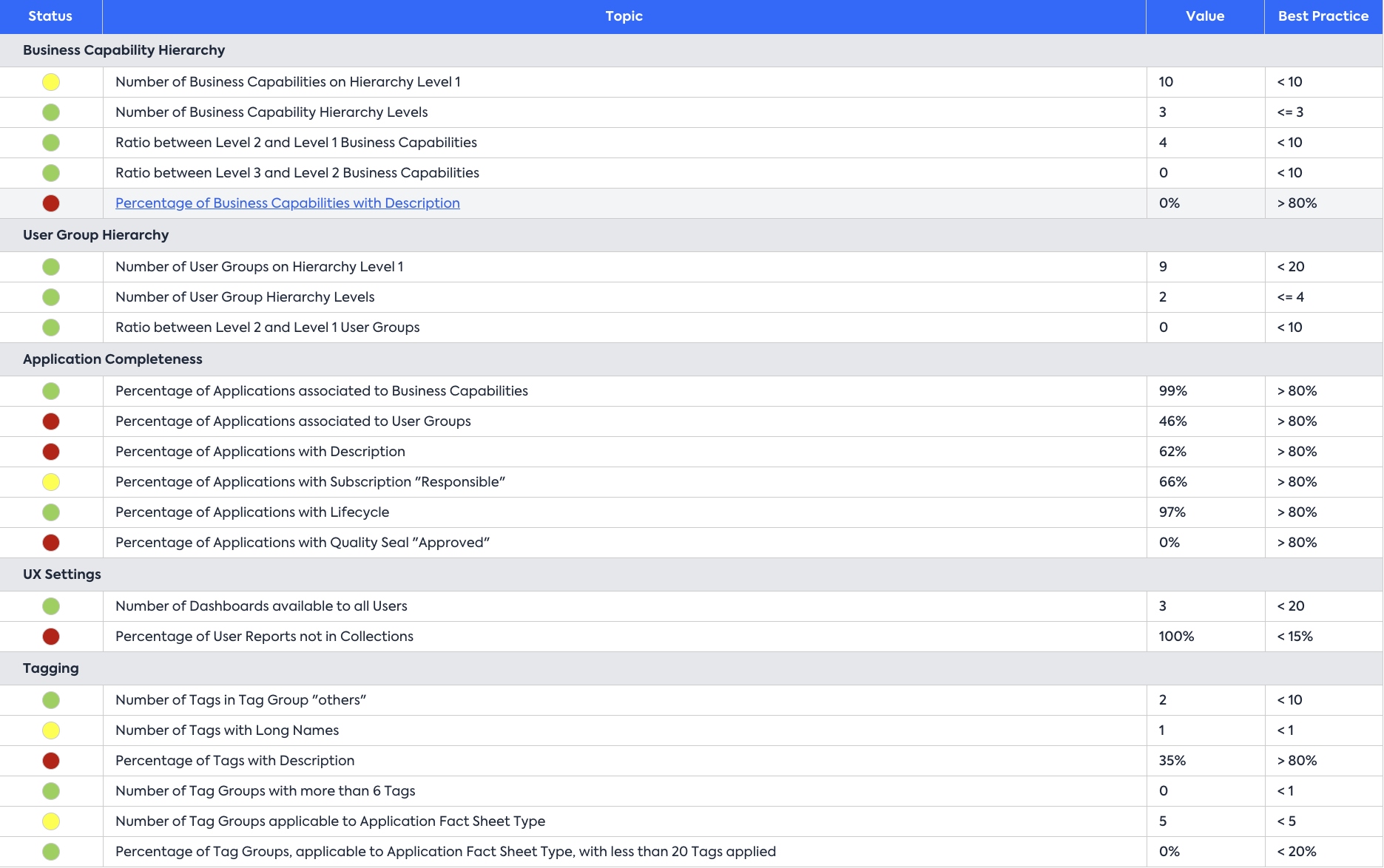
5. Use Dashboards and develop the first recommendations
Based on the analysis of your application data, develop recommendations for optimizing your application portfolio. This may include retiring or consolidating applications, investing in new ones, or re-architecting existing ones. Usually this is the point where you need to think of how you can visualize and make the results of your analysis accessible to your different key stakeholders, for example your CIO. To get a better overview of the portfolio data that you can use as a starting point for your discussions:
Use the SAP LeanIX out-of-the-box dashboard for Application Portfolio Management (available for all SAP LeanIX customers). This Dashboard provides you automatically with data on
- Live Applications by Business Capability
- Application run cost broken down by Business Capability
- Portfolio Complexity
- Data Quality KPI
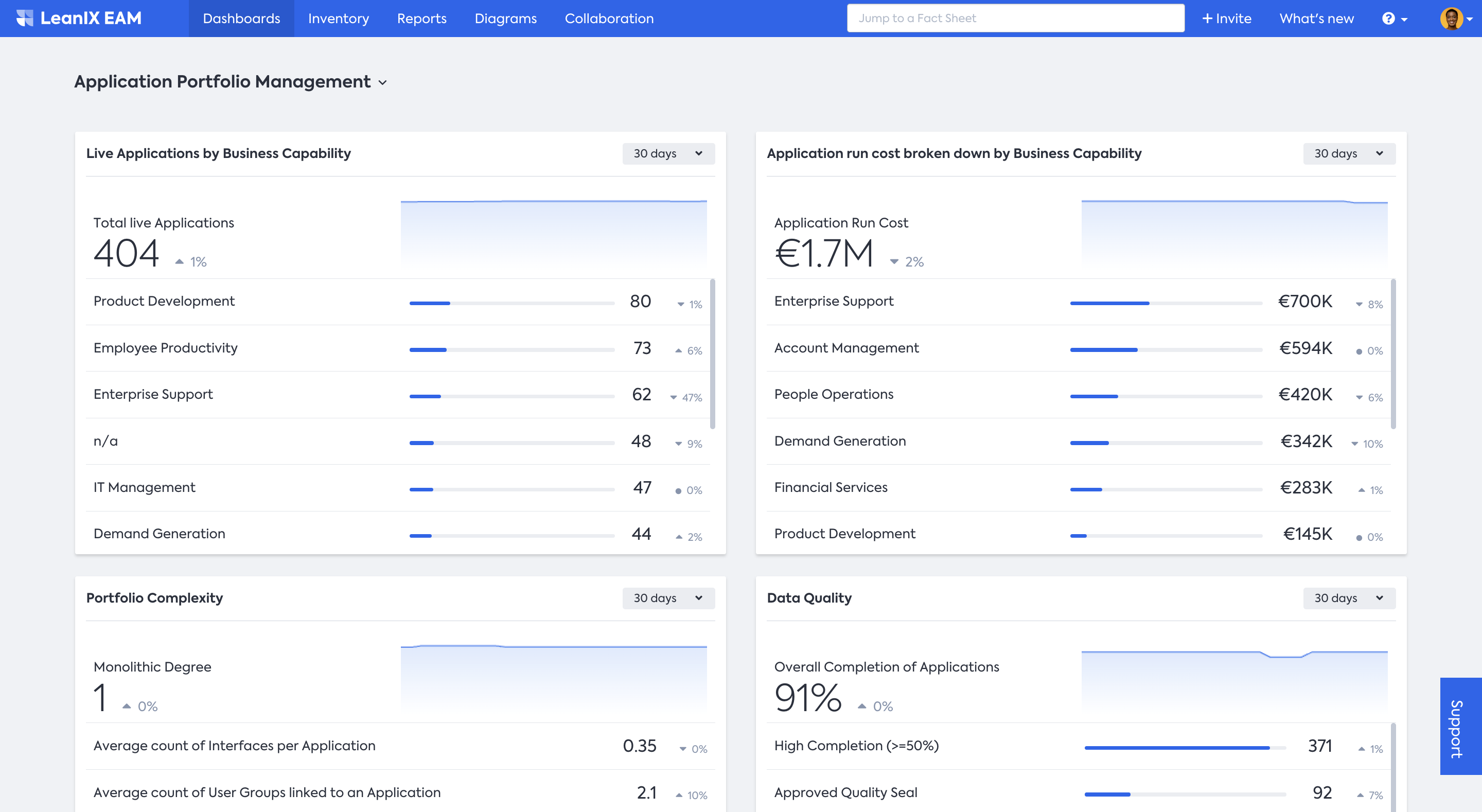
6. Align on next steps with CIO and business stakeholders
Use the data to suggest the following steps to your CIO and business stakeholders. Depending on the results of your analysis, different scenarios are possible. Application Portfolio Assessment is usually the first use case SAP LeanIX customers tackle when they start using SAP LeanIX. After the first iteration, there are several options how you can increase the benefit of SAP LeanIX for your organization. Some typical and recommended next steps are:
- Leverage the learnings to improve the organization’s EA Function and practice and enrich your Application Repository for even better management of the IT landscape, e.g., by
- expanding your scope to other top-level business capabilities, or even build the application repository for the entire organization
- adding additional Fact Sheets like Data Objects, Processes (e.g., leveraging the out-of-the-box integration between SAP LeanIX and SAP Signavio) to prepare other use cases. You can also leverage IT components data from the reference catalog to add Technology information.
- checking and increasing the quality of data in your Fact Sheets by leveraging collaboration features like Survey
- You can focus on onboarding more users/Application owners to SAP LeanIX
- Run an Application Rationalization initiative to identify candidates for cost saving and reduce costs
- Run an Application Modernization initiative using SAP LeanIX Architecture and Road Map Planning. You can build on the cost saving candidates identified in the application portfolio assessment and now plan the target architecture and execute on your initiative
- Tap into the following use cases to achieve a tangible outcome for your business, e.g., Application rationalization, Obsolescence risk management, Application modernization, ERP Transformation
- If your organization's application portfolio relies heavily on SaaS, leverage the SaaS Discovery feature to get visibility of all your SaaS applications and usage – and pull relevant data automatically into SAP LeanIX.
Updated 23 days ago
